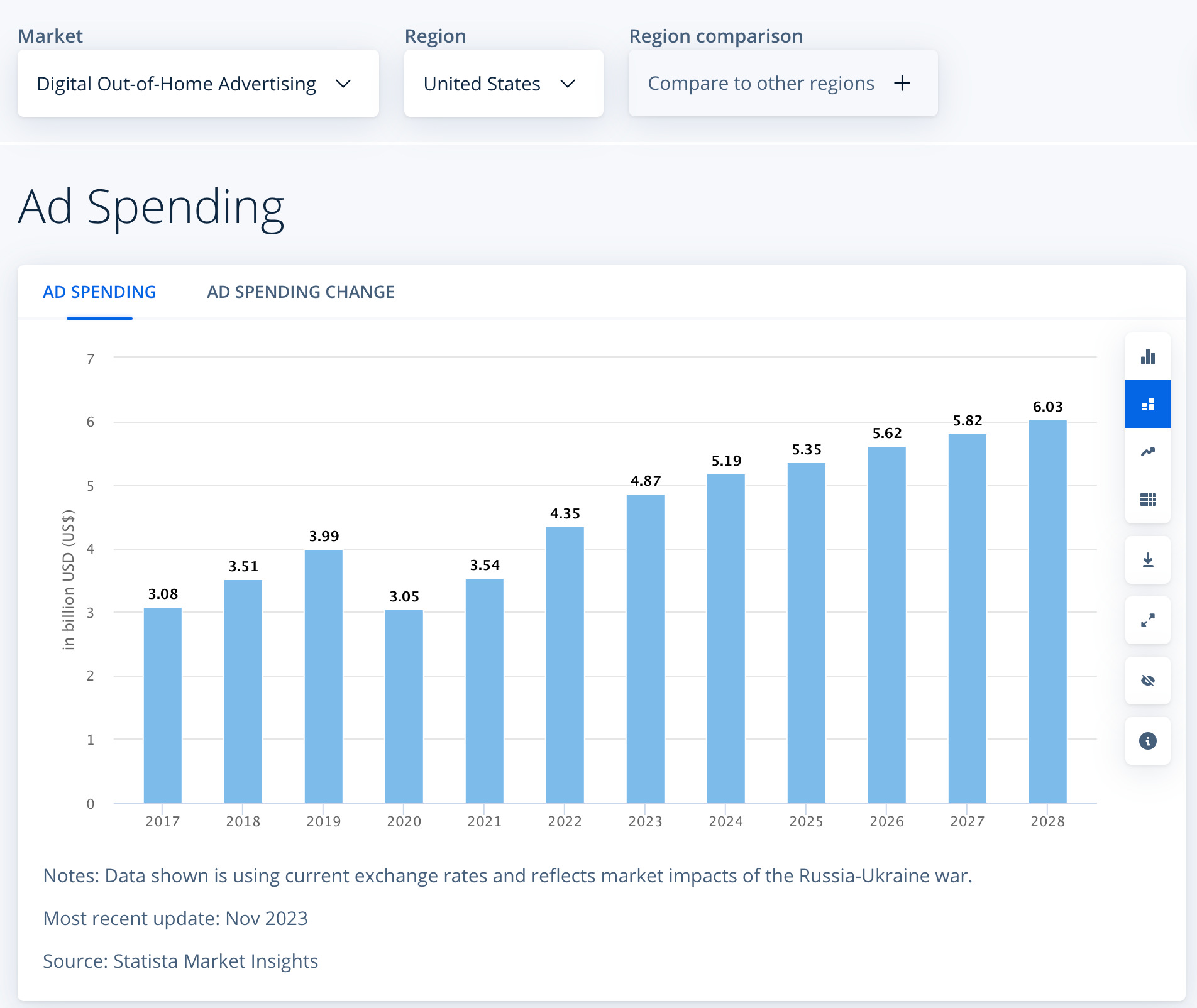Why place-based media is essential for DOOH success

Division is a word we’ve heard too much in the past few years. Typically, it peppers conversations about politics, rhetoric, education, and Thanksgiving dinner tables. Recently I’ve seen it play out in our industry with out-of-home and digital out-of-home media.
Much like the divisive issues our friends in linear TV land pump to maintain their audience, and relevancy, I’ve observed a shift inside of OOH that not only threatens our position as an industry but our ability to grow to the size that we all believe we deserve.
Here is how one of my observations played out. I was at an event where the topic du jour was programmatic digital out-of-home aka DOOH aka pDOOH aka whatever else we have decided to call it. A representative from one of the bigger media owners stated their belief that DOOH struggles to grow because there are so many low-quality placements that make the rest of the more premium options look bad. They should just pack up shop and get out of our OOH/DOOH/pDOOH industry. How do we police these low-quality screens?! I’m paraphrasing and slightly exaggerating, but the statement's sentiment is accurate.
I, and I hope others in the room, rolled their eyes a bit at this sense of entitlement. Not because this representative’s inventory isn’t great. They have a myriad of excellent screens in very high demand. What they lack is the bigger picture and a growth mindset. For one, if your sales pitch is based on degrading a huge segment of our channel, your pitch is bad. Dividing OOH into buckets based on your judgments is the kind of divisiveness that quite literally hurts the industry. It’s a mindset still stuck on selling placements rather than impressions, which, if you are new to the year 2023, is precisely what programmatic media trading is not about.
We in OOH have spent years, at least the near-decade I’ve been in the industry, pondering the low market share we receive and have been stymied on strategies of how to grow our share of advertising budgets. Ian Dallimore, VP of Digital Growth at Lamar Advertising recently gave an interview promoting collaboration and the need to work together to achieve greater spends. He’s absolutely right, but close collaboration and having an audience with the big brands and agencies, cannot come at the expense of the growing segment of our industry that has a much harder time getting a seat at the table; the segment of our industry that has a much higher capacity for meaningful growth. I don’t claim to have the silver bullet, but Ian and I do have a better outlook than No-growth Negative Nelly.
Industry forecasts have promoted that this will be the year DOOH sees growth for a while now. Let’s not be the forces inside the industry preventing that from happening.
In OOH, we get noticed for the big things, but we will grow because of the small things. Popular or not, large-scale OOH has not been on the leading edge of growth for OOH. Don’t get me wrong, large formats are still bar none, the best marketing tools we have for ourselves, they are an incredible platform to showcase dynamic creative, animation, and augmented reality, it just isn’t the growth driver our industry needs.
Big OOH cannot scale at the rate that place-based networks can, and we need the proliferation of more screens in every corner of the outdoor world. In a world where screens are everywhere, we can finally start to compete with digital giants and realize growth. Yes, there will be a premium on some of those screens based on their size, dwell times, opportunity to view, impression multipliers, audio and video capabilities, location, venue, and so many other parameters. There will also be cheaper, less obvious screens, smaller screens, and niche venue screens. Trust me, I take every single pitch from these operators. Brands are missing unbelievable impressions – literally billions of impressions – available with place-based networks. As of the 2022 year-end, place-based OOH is barely back to 55% of pre-pandemic levels even though the number of new impressions launched since then is massive!
Another area where I hold a deep belief that place-based OOH will fuel our growth is audience planning. Audiences are built for place-based OOH. When audience intelligence companies talk about identity and segmentation they are not talking about consumers driving down a highway. They are isolating the characteristics of consumers in stores, service venues, and online. They are clocking consumers where the transactions happen. Do you know what OOH media is available in those places? Place-based OOH! We are at the very source where audience intelligence originates! Roadside billboards are the mass media, general market, brand awareness, bread-and-butter of traditional OOH. When my strategy is to get media placements in front of a consumer profile or a behavioral audience, I am going to heavy up on place-based OOH. I’m serving impressions where my ideal customer is out living their real life at bars, gyms, laundromats, shopping centers, gas stations, schools, pharmacies, doctors, etc.
We have scale, we have reach and frequency, and audiences become more useful when we have more screens in more places. No matter where it is, most DOOH screens reach more people during a single play than a single display, in-app, OTT, or social ad. We have CPMs that are unbeatable. Traditional OOH sellers must get comfortable being in the company of place-based DOOH and enjoy the ride! Brands deserve to experience the full breadth of impressions our channel can offer!
We can’t keep infighting and expect to win. We can’t continue dividing clients’ opinions on OOH and expect to grow the channel. More brands buying into more place-based media will unlock audience buying and grow revenue for our industry. The little guy isn’t going to steal all the cake. Place-based OOH simply sets a bigger table for the entire industry. In the words of Z-Ro: “Everybody gone eat.”

